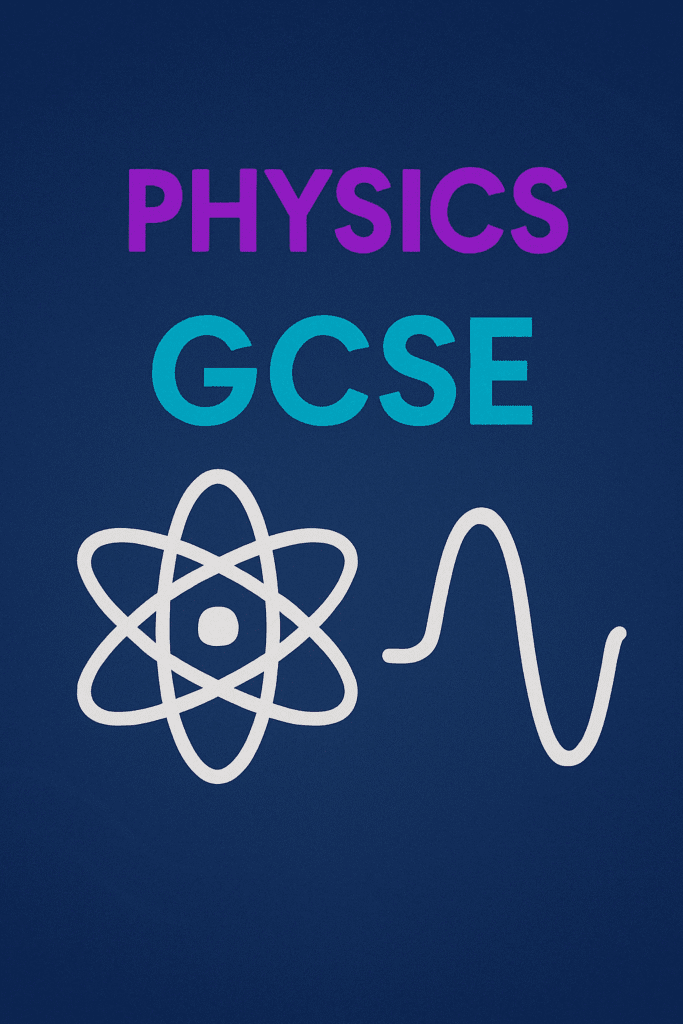Reading Time: < 1 minute
Table of Contents
ToggleElectricity and Circuits
Introduction
Electricity powers our modern world, and understanding circuits is a key topic in GCSE Physics. This article breaks down the fundamentals of electricity, including laws, components, and calculations.
This article will cover:
- Circuit components and their functions.
- Ohm’s law and power calculations.
- Practical applications of electrical systems.
Circuit Components
Key Components
- Resistors: Limit the flow of current.
- Capacitors: Store and release electrical energy.
- Diodes: Allow current to flow in one direction only.
Symbols and Functions
Understanding circuit diagrams is essential. Learn to identify components using their symbols (e.g.,
 for resistors, batteries, switches).
for resistors, batteries, switches).Ohm’s Law and Power Calculations
Ohm’s Law
![Rendered by QuickLaTeX.com \[ V = IR \quad (\text{Voltage} = \text{Current} \times \text{Resistance}) \]](data:image/svg+xml;base64,PHN2ZyB4bWxucz0iaHR0cDovL3d3dy53My5vcmcvMjAwMC9zdmciIHdpZHRoPSIzMzciIGhlaWdodD0iMTkiIHZpZXdCb3g9IjAgMCAzMzcgMTkiPjxyZWN0IHdpZHRoPSIxMDAlIiBoZWlnaHQ9IjEwMCUiIHN0eWxlPSJmaWxsOiNjZmQ0ZGI7ZmlsbC1vcGFjaXR5OiAwLjE7Ii8+PC9zdmc+)
Electrical Power
![Rendered by QuickLaTeX.com \[ P = IV \quad (\text{Power} = \text{Current} \times \text{Voltage}) \]](data:image/svg+xml;base64,PHN2ZyB4bWxucz0iaHR0cDovL3d3dy53My5vcmcvMjAwMC9zdmciIHdpZHRoPSIzMDMiIGhlaWdodD0iMTkiIHZpZXdCb3g9IjAgMCAzMDMgMTkiPjxyZWN0IHdpZHRoPSIxMDAlIiBoZWlnaHQ9IjEwMCUiIHN0eWxlPSJmaWxsOiNjZmQ0ZGI7ZmlsbC1vcGFjaXR5OiAwLjE7Ii8+PC9zdmc+)
Example: A circuit with a current of 2A and voltage of 10V.
![Rendered by QuickLaTeX.com \[ P = 2 \times 10 = 20 \, \text{watts} \]](data:image/svg+xml;base64,PHN2ZyB4bWxucz0iaHR0cDovL3d3dy53My5vcmcvMjAwMC9zdmciIHdpZHRoPSIxNzIiIGhlaWdodD0iMTMiIHZpZXdCb3g9IjAgMCAxNzIgMTMiPjxyZWN0IHdpZHRoPSIxMDAlIiBoZWlnaHQ9IjEwMCUiIHN0eWxlPSJmaWxsOiNjZmQ0ZGI7ZmlsbC1vcGFjaXR5OiAwLjE7Ii8+PC9zdmc+)
Practical Applications
- Household Circuits: Understanding fuse ratings and safety devices.
- Renewable Energy Systems: Solar panel circuitry for homes.
Conclusion
Electricity and circuits are crucial topics in GCSE Physics. Practise calculating power, resistance, and voltage to deepen your understanding and succeed in exams.


